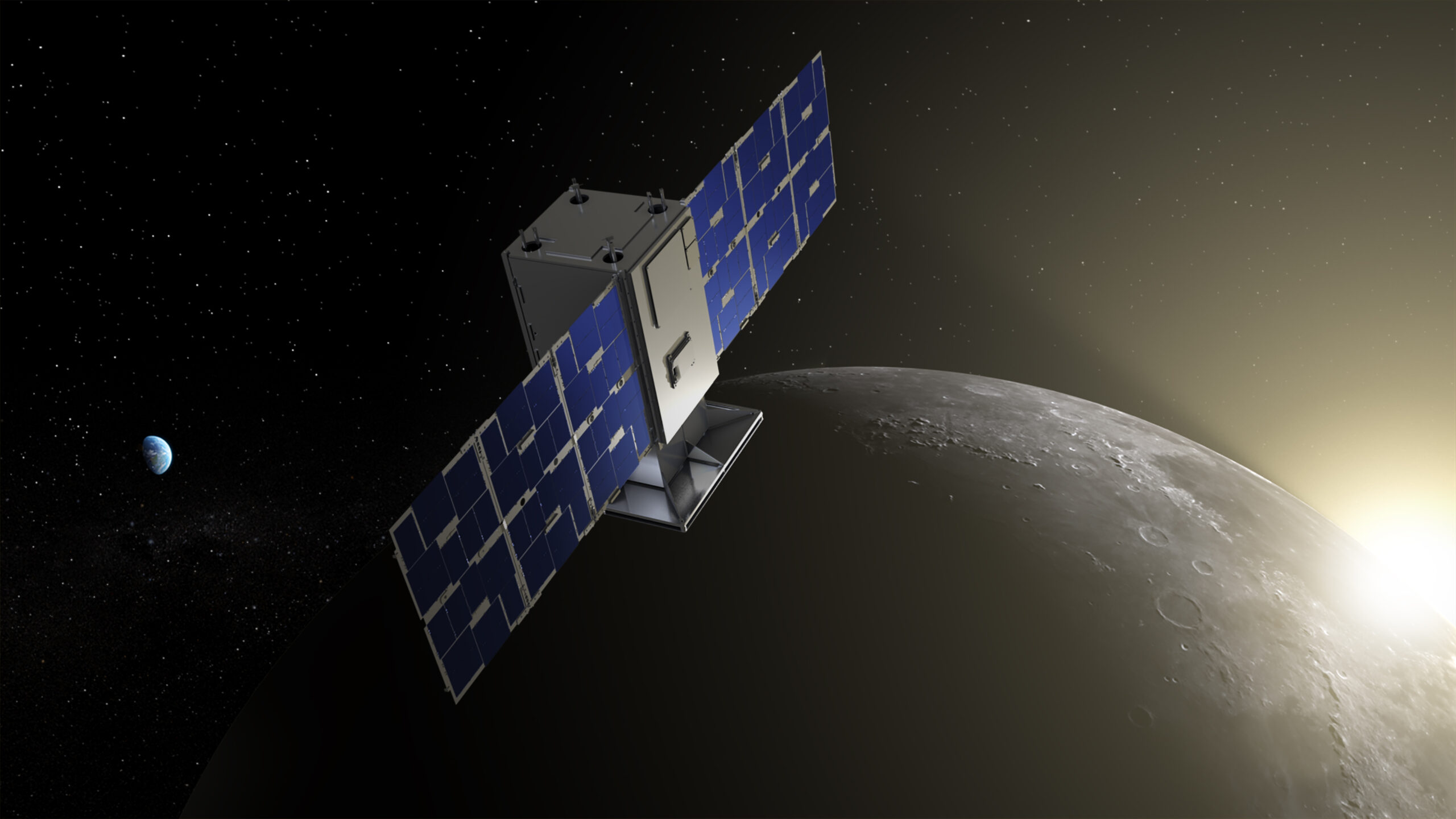WASHINGTON — One NASA-funded lunar cubesat has recovered from a communications glitch while engineers are developing backup plans for another cubesat that has suffered a propulsion problem.
NASA announced Feb. 8 that controllers had restored the ability to send commands to the Cislunar Autonomous Positioning System Technology Operations and Navigation Experiment (CAPSTONE) cubesat. That cubesat, operated by Colorado-based Advanced Space for NASA, has been orbiting the moon since November in a near-rectilinear halo orbit, the same orbit planned for the lunar Gateway.
The spacecraft had been unable to receive commands since Jan. 26, although it was otherwise functioning and transmitting telemetry back to Earth. The onboard computer rebooted Feb. 6 when triggered by a command-loss timer, restoring two-way communications. NASA did not disclose what kept the spacecraft from receiving commands.
Other than the communications issue, CAPSTONE has been working well since arriving at the moon, completing more than 12 orbits. The spacecraft has only had to perform maneuvers twice to maintain its orbit, compared to expectations that such maneuvers would be required every orbit.
In addition to testing the stability of the near-rectilinear halo orbit, satellite operators attempted a test of its autonomous positioning system with another spacecraft in lunar orbit, NASA’s Lunar Reconnaissance Orbiter (LRO). In that Jan. 18 crosslink test, LRO received a signal from CAPSTONE, but CAPSTONE did not collect ranging measurements from the returned signal required for the navigation measurements. Additional crosslink tests are planned.
The CAPSTONE team has worked through several issues since the spacecraft’s launch in June, including a communications outage shortly after separation from its Lunar Photon kick stage and an attitude control problem caused by a malfunctioning thruster in September. Spacecraft engineers were able to overcome those problems, leading to a successful orbital insertion in November.
“We’ve learned a tremendous amount with just a small, 12U cubesat on the way to the moon that is informing other programs,” said Brad Cheetham, chief executive of Advanced Space, during a panel at the Federal Aviation Administration Commercial Space Transportation Conference Feb. 9.
Another lunar-bound cubesat, though, is still struggling with a propulsion problem. NASA’s Lunar Flashlight cubesat launched Dec. 9 as a secondary payload on the Falcon 9 launch of a commercial lunar lander by Japanese company ispace. A month later, NASA reported that the cubesat’s thrusters were underperforming, which threatened the spacecraft’s ability to enter a near-rectilinear halo orbit.
NASA said Feb. 8 that efforts to fix the problem, including using one fully functioning thruster to adjust its trajectory, were unsuccessful. NASA said that one thruster suffered a “rapid loss of performance” after a series of maneuvers, leading engineers to conclude that the spacecraft does not have the ability to enter lunar orbit.
The mission team will try an alternative approach to achieve the science goals of the mission, which involve flying over the south pole of the moon and using lasers to look for evidence of water ice deposits there. Engineers will attempt to maneuver the spacecraft into a very high Earth orbit that will allow flybys of the south pole of the moon once a month. Those flybys could begin as soon as June.
Other systems on Lunar Flashlight are working well, NASA said. That included recent tests of its laser reflectometer instrument.
